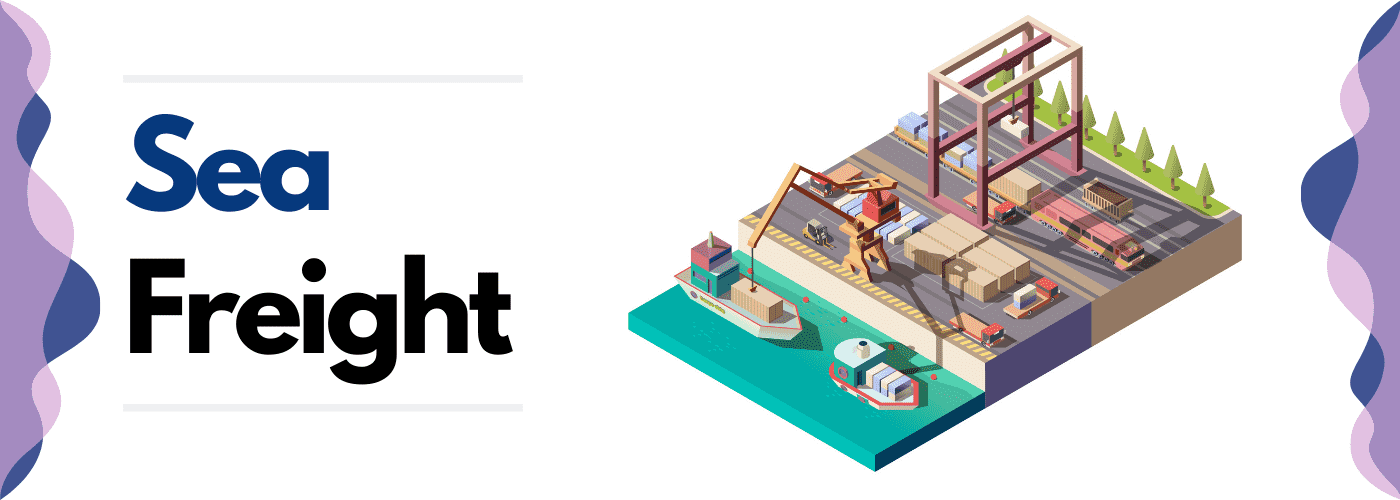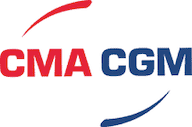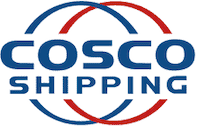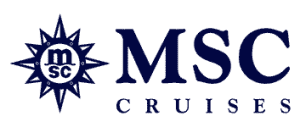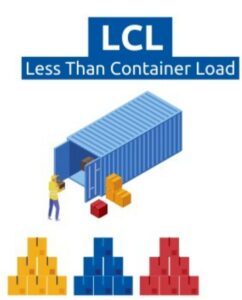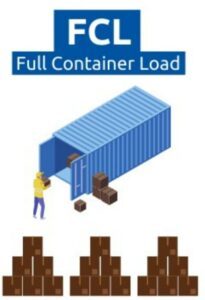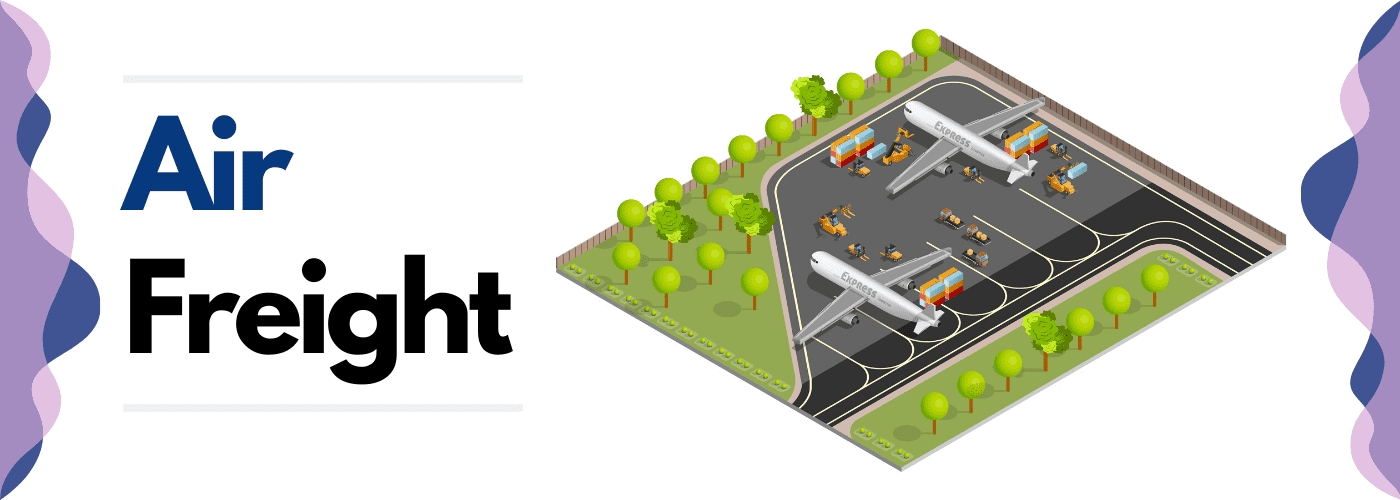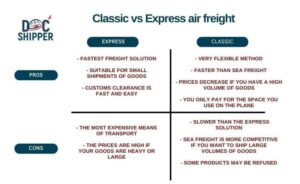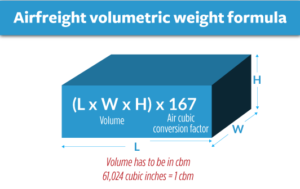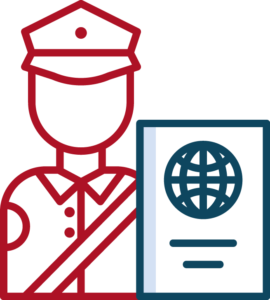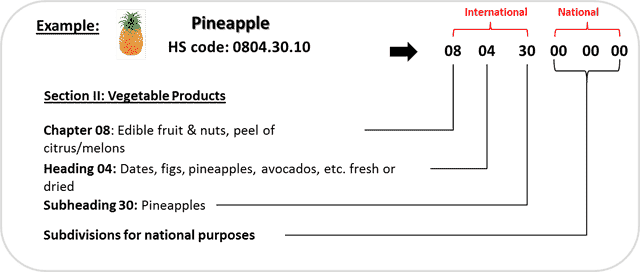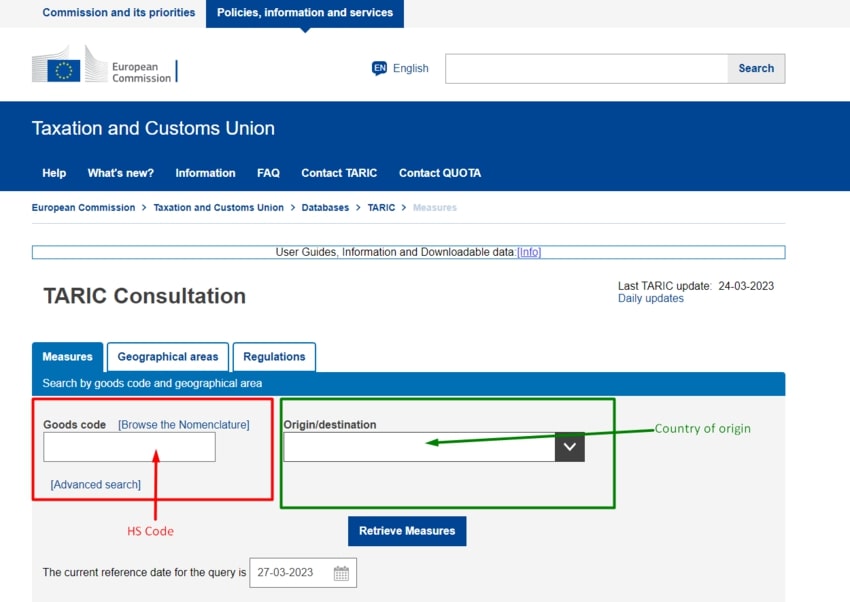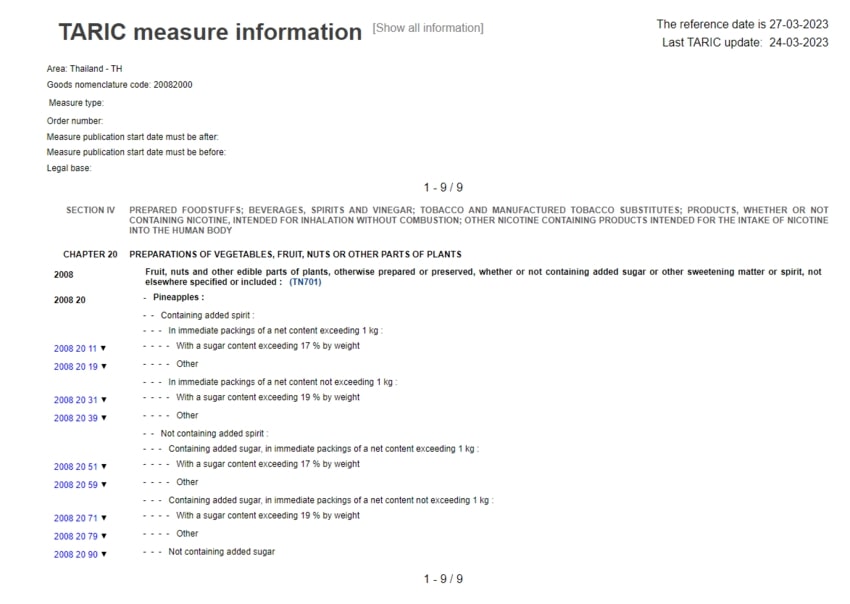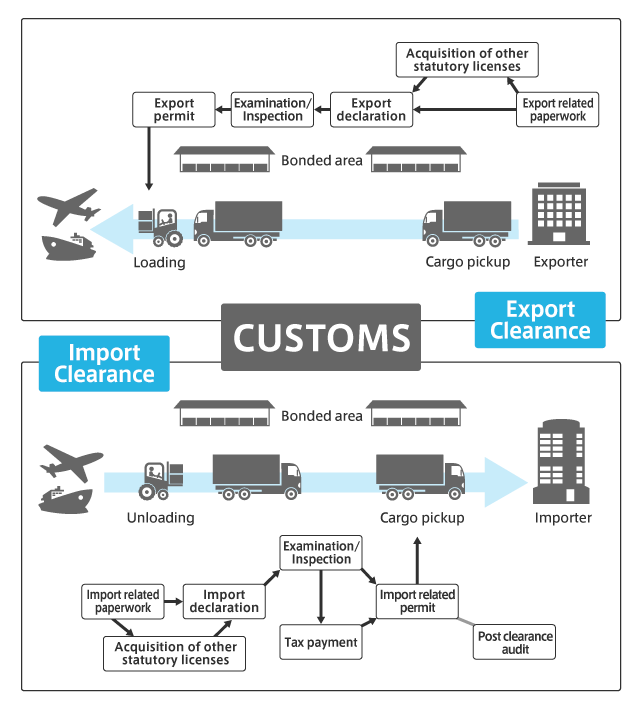Freight shipping plays a crucial role in international trade, connecting businesses across the globe. When it comes to shipping goods between Thailand and Europe, understanding the rates, transit time, and duties and taxes involved is essential for successful logistics management. This article provides a comprehensive guide to freight shipping between Thailand and Europe, covering the key aspects that businesses need to consider.
Siam Shipping is the perfect partner if you are a business or an individual looking for solutions for international freight. They cater to your individual needs and deliver anywhere in Europe, and Thailand thanks to their proficiency in air, sea, and road transportation.
Table of Contents
What is the most suitable method of transport between Thailand and Europe?
The movement of goods between Thailand and Europe encompasses a trio of vital transportation modes: air, road, and sea. Air freight offers a swift and efficient option, ensuring timely delivery of goods through direct flights connecting major airports in Thailand to various European destinations. Road transportation enables the seamless flow of cargo, utilizing an extensive network of highways that stretch across continents. Lastly, sea freight with cargo vessels navigating the vast oceans, linking major ports in Thailand and Europe, These three modes collectively provide diverse options for freight transportation, catering to the needs of businesses and industries in both regions
Sea freight from Thailand to Europe
Ocean freight will be the best deal for you if :
- Your goods are bigger than 2 CBM
- You’re not in a hurry to receive them
- You want to ship specific goods (batteries, vehicles…)
Remark Siam Shipping: Contact us now! Your personal Siam advisor will find out a customized solution for your import process between Thailand & Europe.
TOP 5 – Shipping line
Overview – Ocean freight between Thailand and Europe
Ocean freight between Thailand and Europe holds significant importance for trade exchanges between these two distant regions. Thailand, as a thriving economic nation, exports a wide range of products such as electronics, textiles, agricultural goods, and automotive parts. Europe, on the other hand, stands as one of the world's major consumption and distribution markets. Therefore, maritime transportation plays a crucial role in meeting the growing demand for Thai products in the European market.
Bilateral relations between Thailand and Europe
Bilateral relations between Thailand and the continent of Europe are of significant importance and have witnessed substantial growth over the years. Europe, as a whole, stands as a key trade partner for Thailand. Trade between the two regions spans various sectors, including industry, services, tourism, and technology.
In recent years, the volume of bilateral trade between Thailand and Europe has been substantial, with total trade reaching approximately 15 billion euros in 2020. Thailand primarily exports electronic products, textiles, transportation equipment, and food products to Europe, while Europe exports pharmaceuticals, machinery, transportation equipment, and electrical equipment to Thailand. These trade exchanges contribute to the economic development of both regions and foster stronger commercial ties. The ongoing growth in trade volume between Thailand and Europe reflects the mutual benefits and the potential for further collaboration in the future.
The Main Shipping Seaports in Europe
Port of Rotterdam
The Port of Rotterdam is the largest port in Europe and one of the most important in the world. Located in the Netherlands, it occupies a strategic position at the mouth of the Rhine River. It offers modern and diverse facilities for maritime trade, cargo transportation, and the petrochemical industry.
With its extensive infrastructure and deep-water access, it serves as a vital hub for global shipping and logistics.
Port of Antwerp
The Port of Antwerp, situated in Belgium, is one of Europe's largest ports and a key player in international trade. Known for its strategic location along the Scheldt River, it serves as a gateway to Europe, connecting global supply chains to the continent.
Port of Hamburg
The Port of Hamburg, located in Germany, is a major seaport and an important economic center in Northern Europe. Its advantageous location on the Elbe River allows for direct access to the North Sea, making it a crucial trade gateway for Central and Eastern Europe.
The Main Shipping seaports in Thailand
The Port of Bangkok
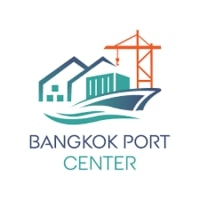
Additional information:
- It is the largest and busiest port in Thailand, covering an area of approximately 2,572 hectares.
- The port handles a significant volume of container traffic. In 2020, it handled a total of 9.7 million twenty-foot equivalent units (TEUs) of containers.
Laem Chabang Port
The Laem Chabang Port is situated in the province of Chonburi, around 130 kilometers southeast of Bangkok. It is Thailand's second-largest port and has a connection to the country's railway system for the movement of cargo across the interior.
Chiang Saen Port
The Chiang Saen Port is situated close to the Laos border in the province of Chiang Rai, on the Mekong River. Between Thailand and its neighbors, particularly Laos and China, it is used to convey cargo.
Transit time between Thailand and Europe
Here are a few examples of the average transit times, in days, between the largest Europe and Thai ports.
| Port of Rotterdam | Port of Antwerp | Port of Hamburg | |
| Bangkok | 29 days | 25 days | 32 days |
| Laem Chabang | 28 days | 28 days | 29 days |
| Chiang Saen | 25 days | 31 days | 34 days |
*These transit times between the different ports in Europe and Thailand are given as an indication.
Should I ship by groupage or full container between Europe and Thailand?
- 40-foot HQ (High Cube) Container: This container has a length of 40 feet (12.19 meters) and is designed with extra height, known as "High Cube," providing increased vertical space. It has a capacity of 76 cubic meters, allowing for the transportation of larger volumes of goods compared to other containers. The additional height makes it suitable for bulky or taller cargo.
- 40-foot Container: Similar to the 40-foot HQ container, this container also has a length of 40 feet but lacks extra height. It has a slightly smaller capacity of 67 cubic meters. The 40-foot container is commonly used for transporting a variety of goods and is widely available for shipping purposes.
- 20-foot Container: This container has a length of 20 feet (6.09 meters) and is the smallest among the standard container sizes. It has a capacity of 33 cubic meters, which makes it suitable for smaller shipments or when space is limited. The 20-foot container is commonly used for transporting smaller volumes of goods or when the cargo size does not require larger containers.
Less than a container : LCL
Less than Container Load : refers to a shipment that is smaller and does not require a full shipping container. Multiple smaller shipments are consolidated into a shared container to reduce costs. It is a cost-effective option for smaller businesses or individuals who don't have enough cargo to fill an entire container.
This is the most cost-effective choice for small shipments of less than 15 m³.
The Benefits of LCL Shipping
- Cost-Effective: Sharing transportation costs among multiple shippers makes LCL more affordable for businesses and individuals with smaller cargo quantities.
- Flexibility: LCL allows for shipping smaller quantities of goods without needing to fill an entire container, providing flexibility in shipment sizes.
- Accessibility: LCL opens up international markets to smaller businesses, enabling them to compete globally without large volumes of goods.
- Reduced Risk: LCL reduces the risk of carrying a large inventory as damages or losses only affect the specific shipment rather than the entire container.
The Drawbacks OF LCL
- Longer Transit Time: Additional consolidation and deconsolidation processes can result in longer transit times compared to FCL shipments, which may not be suitable for time-sensitive deliveries.
- Increased Handling: LCL shipments involve more handling and documentation processes, increasing the complexity and potential for errors during consolidation and deconsolidation.
- Limited Control: Shippers have less control over the handling and transportation of their shipment since it shares the container with other shipments, potentially impacting care and security.
Full Container:FCL
Full Container Load: For this type of shipment, one person will use the entire capacity of the container. This minimizes the risk of damage to the goods.
This method would still be advantageous even if you did not fill the container completely. However, it is the most cost-effective for shipments over 15 m³.
Advantages of FCL
- Faster Transit Time: FCL shipments generally have shorter transit times as they do not require consolidation or deconsolidation processes, enabling quicker delivery.
- Enhanced Security: The dedicated container provides greater security, minimizing the risk of damage or loss associated with sharing the container.
- Reduced Handling: FCL shipments involve minimal handling compared to LCL shipments, reducing the chances of mishandling and potential damage during transportation.
Disadvantages of FCL
- A minimum volume of at least 15 m³ to be profitable.
- Wasted Space: If your cargo doesn't fill up the entire container, you're essentially paying for unused space. This inefficient use of container space can lead to higher shipping costs compared to a more flexible option like LCL (Less than Container Load).
- Limited to Large Shipments: FCL shipping is best suited for larger shipments. If your cargo volume falls below the required 15 m³, you might have to wait until you accumulate enough goods to fill a container, which could delay your shipments.
- Higher Risk of Damage: When cargo isn't tightly packed to fill the container completely, there's a higher risk of items shifting during transit, potentially leading to damage. Smaller shipments may have less stability within the container.
Siam Shipping Alert:Looking to ship your goods via LCL (Less than Container Load) during sea freight? Don't overlook the potential risks and delays that can impact your shipments! Protect your purchases from damage and ensure smooth customs clearance with our expert solutions. Don't hesitate to contact us if you have any questions.
Special transports by sea between Thailand and Europe
Reefer container
The reefer container is used to transport chemicals or perishable products at controlled temperatures. It is equipped with a cooling system.
Roro
RORO (Roll On/Roll Off) vessels are used to transport vehicles such as cars, trucks, vans, semi-trailers, and rail cars. They are considered the safest and most efficient vessels for heavy or special cargo.
Bulk
Bulk carriers are used to transport solid bulk materials such as minerals, grains, coal, or liquids such as crude oil, gas, and chemicals. These vessels are larger and easier to load and unload.
OOG
OOG cargo is cargo that exceeds the dimensions of a standard container. Two types of containers exist for these goods:
- Open Top Container: they have no roof, which allows loading cargo that exceeds the height of the containers.
- Flat Rack Container: these are flat containers without side walls or roofs, used for goods that cannot be loaded in standard containers.
How much does the sea freight cost between Thailand and Europe?
The cost of sea freight between Europe and Thailand will depend on several factors such as the type of cargo being shipped, the volume and weight of the cargo, the distance between the ports of origin and destination, the shipping method, and the current market conditions.
As an estimation, the average cost for shipping a 20-foot container from Thailand to Europe ranges between US$1,500 and US$3,000. However, it's important to note that this is a general estimate and actual prices may differ based on the aforementioned factors.
It is possible to estimate the cost if you know the exact weight and volume of your goods. To do this, you must follow these 3 steps:
- Determine the PU (Paying Unit): for this, you need to compare the mass and volume of your cargo based on the theory of sea freight, which states that one ton = 1 m³. The higher value between volume and mass will be the UP. For example, for a volume of 20 m³ and a mass of 25 tons, the UP will be 25 tons.
- Calculate the basic freight: to do this, multiply the cost of the UP by its number.
- Calculate the net freight: with the following formula, Base freight + BAF + CSP - Rebate. The result will be the cost of your sea freight.
Tariff surcharges
Tariff surcharges may apply on your transport between Thailand and Europe, here are the main ones:
- Bunker Adjustment Factor (BAF): This surcharge is applied according to fluctuations in the price of fuel and may vary regularly depending on market conditions.
- Security Surcharge (SCS): This surcharge is applied to cover costs related to port and vessel security.
- Overcapacity surcharge (OWS): This surcharge is applied when demand for shipping is lower than supply, resulting in excess vessel capacity.
- Congestion surcharge (CGS): This surcharge is applied in ports where congestion is high, resulting in extended waiting times for ships.
Air freight from Thailand to Europe
Air freight will be the most efficient solution if:
- Your goods are smaller than 2 CBM and 200 kg
- You’re in a hurry to receive/send the goods
Remark Siam Shipping: Naturally, if you need to get your goods delivered as fast as possible, air freight is the best option for you. You are in the rush? Contact our Siam Expert now!
Classic or Express air freight
There are two types of air freight:
- Classic air freight: This option uses the space available on board commercial flights of airlines such as Air France, Thai Airways, China Southern Airlines, or even Qatar Airways, and exploits the empty spaces.
- Express airfreight: This option uses aircraft dedicated solely to airfreight. This solution is offered by courier companies, such as FedEx, DHL, UPS, or even TNT, which offers door-to-door solutions.
Main airports in Europe
Europe is home to several major airports that serve as important transportation hubs.
London Heathrow Airport
One of the busiest airports in the world and a key center for air freight operations, Heathrow Airport is situated in the western section of London. It functions as a crucial entry point for freight transit, linking companies and industries to several locations throughout the world. London Heathrow Airport, one of the world's busiest, connects global industries through its four terminals and vast cargo facilities.
Frankfurt Airport
It is a key center for aviation freight traffic and one of the busiest airports in all of Europe. Frankfurt Airport is situated in Frankfurt, Germany, and acts as a significant entry point for cargo shipments to and from several locations across the world.
Paris Charles de Gaulle
This airport constitutes a substantial portion of the airport's activities. Charles de Gaulle is one of the busiest airports in Europe and a significant center for both passenger and freight traffic.
Additional information:
- Modern cargo facilities at Charles de Gaulle Airport can accommodate many different kinds of cargoes.
- Cargo Airlines: Numerous cargo airlines operate at Charles de Gaulle Airport, providing a comprehensive network of destinations globally.
- Connectivity : Charles de Gaulle Airport benefits from its extensive air connectivity, with direct flights to major cities and airports worldwide.
- Customs and Security : Like any international airport, Charles de Gaulle Airport has customs and security procedures in place to ensure compliance with international regulations.
- Special Handling: The airport provides specialized handling services for various types of cargo, including perishable goods, hazardous materials, oversized shipments, and valuable or fragile items.
Amsterdam Airport Schiphol
The Amsterdam Airport Schiphol in the Netherlands is known for its efficient operations and excellent facilities, making it a popular choice for travelers.
Additional information:
- Infrastructure for Cargo: Schiphol Airport is equipped with specialized facilities and infrastructure for handling different kinds of aviation cargo.
- Cargo Airlines: Numerous cargo airlines operate at Schiphol Airport, providing a wide range of freight services.
- Freight Services: Schiphol Airport offers comprehensive services to handle different types of cargo.
- Connectivity: Schiphol Airport enjoys excellent connectivity, with direct flights to hundreds of destinations worldwide.
- These airports, along with many others across Europe, play a crucial role in promoting air travel and fostering connectivity within and beyond the continent.
Main airports in Thailand
Suvarnabhumi Airport

Additional information:
- It has the highest control tower in the world.
- Its terminal is the third largest in the world with 56.3 hectares.
- Forecasted increase in cargo and aviation capacity.
Don Mueang Airport
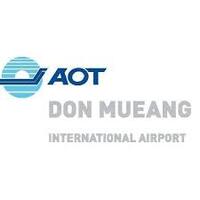
Additional information:
- 700,000 tons of cargo were handled by this airport.
- It worked with 80 airlines
Chiang Mai Airport

Additional information:
- 16,000 tons of annual cargo
- More than 15,000 flights and 2,000,000 passengers annually
Transit time between Thailand and Europe airports
Here are a few examples of the average transit times, in hours, between the largest Europe and Thai airports.
| London Heathrow | Frankfurt | Paris Charles de Gaulle | Amsterdam | |
| Suvarnabhumi | 12 hours | 11 hours | 11 hours | 11 hours |
| Don Mueang | 11 hours | 11 hours | 11 hours | 11 hours |
| Chiang Mai | 11 hours | 10 hours | 11 hours | 10 hours |
*Please note that these transit times are indicative and may vary according to various factors.
What are the advantages of air transport?
- Speed: Air freight is the fastest mode of transporting goods over long distances, ensuring quick delivery and reducing transit times significantly compared to other modes of transportation.
- Global Connectivity: Air freight provides access to a vast network of airports worldwide, allowing businesses to reach customers in remote or distant locations efficiently.
- Reliability: Airlines operate on fixed schedules, ensuring timely pickup and delivery of goods, providing reliability and predictability for businesses.
- Reduced Inventory Costs: The speed of air freight reduces the need for excessive inventory storage, allowing businesses to maintain lower inventory levels and reducing associated costs.
What are the disadvantages of air freight?
- Cost: Air freight is generally more expensive compared to other modes of transportation, making it less cost-effective for certain types of goods or large-volume shipments.
- Limited Capacity: Airplanes have limited cargo space, especially for oversized or heavy shipments, which may restrict the quantity or size of goods that can be transported.
- Weather Dependence: Air freight operations can be affected by adverse weather conditions, such as storms, fog, or volcanic ash clouds, leading to flight delays, cancellations, or rerouting of shipments.
Siam Shipping Advice:Take the hassle out of estimating the cost of your airfreight shipment. Get in touch with us today and receive a complimentary quote within 24 hours. Save time and money by contacting our experts now!"
How much does it cost to transport cargo by air from Thailand to Europe?
To know the price of your goods transported from Thailand to Europe by air freight, you must consult the tariffs of the airline companies. Their tariffs are presented by weight bands in decreasing prices.
The weight taken into account by the airlines will always be the one that is to their advantage, that is to say, the highest between the real weight and the volumetric weight.
How to calculate the volumetric weight of your shipment?
The volumetric weight is the volume occupied by a package, based on its dimensions and its gross weight. To know it, you must measure the dimensions of the package (length, width, and height), then convert them into cubic meters. Then use the formula below:
Volumetric weight = (length x width x height) / 5000
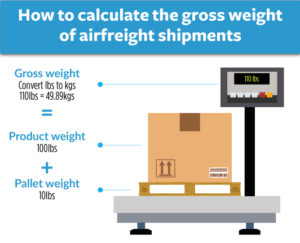
Siam Shipping Advice: Safeguard your delicate, valuable, or time-sensitive goods with the secure and reliable option of air freight. Enhance the protection of your merchandise by choosing our expert services. Contact our dedicated specialists today for comprehensive information on transporting fragile items. Trust us to handle your valuable cargo with utmost care and precision
Door-to-door delivery between Thailand and Europe
Streamline your transportation process with convenient door-to-door delivery services. Say goodbye to time-consuming logistics as we handle everything for you. Enjoy the simplicity of having your goods picked up from your doorstep and delivered to the desired destination. Rest assured that our team of professionals will ensure the safety and security of your valuable cargo throughout the entire journey. Experience hassle-free shipping with our trusted experts.
What are the advantages of door-to-door services?
- Quick delivery: As everything is completed in a 24-hour period, you can send it if your delivery time is during the day.
- Door-to-door delivery is always available, so your package will come even late at night or on a holiday.
- Convenience: Receiving the package at your location rather than having it delivered to you is better for you.
- Your cargo can be qualified for courier delivery if it is a manageable size.
What are the disadvantages of door-to-door services?
- High cost: The cost increases with the urgency of the cargo, as well as with the package's size and weight, which also affect the cost.
Customs clearance in Europe for goods imported from Thailand
Customs clearance in any country is an important and mandatory step that must be done when importing and exporting.
When you import goods in Europe, the customs clearance will consist in paying the customs duties and the VAT. It is also necessary to be attentive to the regulations and standards of the country where you are shipping to avoid having your goods blocked at customs.
Here are the prohibited and regulated products in Europe:
- Prohibited products: drugs, counterfeit goods, plants, animals, and some dangerous materials...
- Regulated products: food (fruits, vegetables, meat, poison, milk), animals, weapons and ammunition, works of art, medicines, products…
Customs valuation
The customs value corresponds to the real economic value of the goods. Its estimation is based on precise rules harmonized at the European level. Thus, the General Rules for the Determination of Customs Value provide for several valuation methods, which are set out in Articles 70 to 74 of the European Customs Code (ECC).
The customs value makes it possible, when importing goods, to determine the duties and taxes that will be collected by the State: customs duties, additional duties, anti-dumping duties, dock dues, VAT, etc., and when exporting, to obtain the basis for certain duties and to collect the data necessary for statistical monitoring of foreign trade.
What are the customs duties and taxes in Europe ?
- CCT: A set of uniform tariffs are offered by the CCT on items imported into the EU. The tariff percentages can be as low as 0% (for specific commodities like books or medical equipment) to as high as 100% (for things like cigarettes or upscale goods). It's vital to remember that the EU's TARIC (Integrated Tariff of the European Communities) database has information on the individual tariff rates for various products.
- Value Added Tax (VAT): This is a tax on the value added at each stage of production and distribution of goods and services. For most goods imported into Europe, the VAT rate is currently 20%. The VAT is usually paid by the importer when the goods enter the country.
- Excise duties: These are taxes on specific products, such as alcohol, tobacco, and fuel. Excise duties are often based on the quantity or volume of the product and are charged in addition to import duties and VAT.
- Anti-dumping duties: These are additional import duties imposed by the EU to counteract unfair trade practices, such as when a foreign company exports a product at a lower price than it charges in its own country. Anti-dumping duties can be significant and may be imposed for several years.
- Environmental taxes: Some products may be subject to environmental taxes, such as taxes on packaging or products that contain hazardous substances.
How to calculate customs duties and taxes
Calculating customs duties and taxes on imports into France can be a complex process that depends on several factors, such as the type of product, its value, and its country of origin. Here are the general steps to follow:
- Determine the product's tariff classification: The first step in calculating customs duties is to determine the product's tariff classification. This is done by consulting the EU's Common Customs Tariff (CCT), which lists the various product categories and their corresponding duty rates. You'll need to know the Harmonized System (HS) code for your product to determine its tariff classification.
- Determine the product's value: The next step is to determine the product's value, which is usually the invoice value of the goods plus any additional costs, such as shipping and insurance.
- Calculate the customs duty: Once you have determined the product's tariff classification and value, you can calculate the customs duty. The duty rate will depend on the product's tariff classification, its value, and the country of origin. You can use the EU's TARIC database to look up the duty rate for your product.
- Calculate the VAT: In addition to customs duties, you will also need to calculate the VAT. The VAT rate in France is currently 20%, but there may be reduced rates for certain products, such as food and books.
- Calculate any other taxes or fees: Depending on the product, there may be other taxes or fees to consider, such as excise duties or environmental taxes.
It's important to note that the customs clearance process and the calculation of duties and taxes can be complex. If you're unsure about how to calculate the duties and taxes for your specific import, it's always best to consult with a customs broker or freight forwarder like Siam Shipping. We can help you navigate the process and ensure that you're meeting all the necessary requirements.
How to find the HS code?
A system of classification for products used in international trade is the HS code (Harmonized System). It organizes goods into categories based on their nature and intended use, making the collection of statistical data and the customs clearance process easier. The HS system contains more than 5,000 different products, each of which is categorized using a distinct eight-digit number.
You can consult these websites to know the HS code of the Thailand products and the Europe products.
Calculating customs duties with the HS Code
Now that you have the HS code of your products, you can find the associated tariffs on the European customs website.
Here is a small illustrated guide to help you understand how to do it:
Enter your HS code and country of origin.
Then, consult taxes applicable to your product.
Does Siam Shipping charge customs duties?
No, no commission is taken from Siam Shipping. As proof, we will send you all the official documents provided by French customs. We will only collect the customs clearance fees, as we declare your goods to the customs for you.
The fees associated with customs duties and taxes will be collected by the French government.
Customs procedures and contact
Siam Shipping Info: Customs clearance is not the easiest part of the transportation process. However, it is a step not to be neglected if you don't want to pay additional fees or suffer delays! We advise you to contact us so that we take care of your customs clearance!
The customs services
Note : You can choose another customs in Europe, this is just an example
Required documents
Original invoice
It is an essential document to allow the clearance of goods in Europe and Thailand.
Bill of lading
This document is used to prove that the product has been delivered by the exporter and records all the details of the transport procedure.
The packing list
This is a complete list created to detail the items that the shipper is shipping. It is essential throughout the shipment and must be present at every stage of the product delivery.
Certificate of Origin
This document certifies the country of origin of the goods.
CE conformity
A certificate of conformity is a document that proves that a product complies with environmental, safety, and health requirements.
Other logistics services
Storing and warehousing
We offer storage services in different countries, especially in Europe and Thailand. You can store your goods in our warehouse until you have enough goods to fill an entire container. This will save you transportation costs.
You can go to our specific page at: Storage services
Packing and repacking
The packaging of your products is an important step that should not be neglected. To ensure that your products are packaged properly and securely, use our professional packaging service!
Additional details can be found on our dedicated page: Packing Services
Insurance for transport
Taking out insurance for your shipment is not mandatory, but is highly recommended. In case of damage or loss of your goods, you will be fully reimbursed. We have negotiated the best prices with the insurance companies so that you can take advantage of this service at a low price!
Visit our specific page here: Insurance services
FAQ | Freight shipping between Thailand and Europe : Rates -Transit time - Duties & taxes
What transportation option will be the most cost-effective between Thailand and Europe?
Air freight is generally the most cost-effective transportation option when traveling between Thailand and Europe. It offers the fastest and most convenient way to cover the long distance between the two regions.
While other modes of transportation, such as trains might be available, they often involve multiple transfers, longer travel times, and may not necessarily result in significant cost savings compared to air travel.
Is it possible for Siam Shippin to handle the shipment of my goods from Europe to Thailand?
Yes, We can handle the shipment of your goods from Europe to Thailand. We provide comprehensive freight forwarding services, including arranging transportation, customs clearance, and logistics management We are experienced in handling international shipments and can assist you in navigating the complexities of importing goods into Thailand from Europe.
What are the costs associated with Siam Shipping's services?
The costs associated with our services for shipping goods from Europe to Thailand vary based on factors like shipment characteristics and additional services required. It's best to contact us directly for a personalized quote detailing the specific costs involved.
What is the shipping duration from Europe to Thailand?
The shipping duration from Europe to Thailand depends on various factors such as the shipping method chosen, the specific origin and destination locations, customs clearance procedures, and any unforeseen circumstances.
It is recommended to consult with the shipping provider, such as Siam Shipping, We will provide you with an accurate estimate for your specific shipment.
DocShipper info: Do you like our article today? For your business interest, you may like the following useful articles :
SIAM Shipping | Procurement - Quality control - Logistics
Alibaba, Dhgate, made-in-china... Many know of websites to get supplies in Asia, but how many have come across a scam ?! It is very risky to pay an Asian supplier halfway around the world based only on promises! DocShipper offers you complete procurement services integrating logistics needs: purchasing, quality control, customization, licensing, transport...
Communication is important, which is why we strive to discuss in the most suitable way for you!

